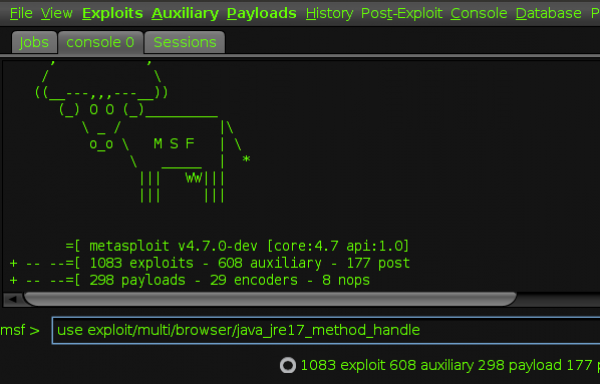If password cracking is something you do on daily basis, you might be aware of the free password cracking tool Hashcat. Mentioning another major feature, oclHashcat is an open source tool under MIT license that allows an easy integration or packaging of the common Linux distros.
This useful password cracking tool can be downloaded in different versions for Linux, OSX, and Windows. Read more here and download oclHashcat. This top free security tool of works with the help of a client-server framework. Developed by Tenable Network Security, the tool is one of the most popular vulnerability scanners we have.
To launch a dictionary attack, Nessus can also call a popular tool Hydra externally. Apart from the above mentioned basic functionalities, Nessus could be used to scan multiple networks on IPv4, IPv6, and hybrid networks.
- Mac for Hackers: How to Get Your Mac Ready for Hacking « Null Byte :: WonderHowTo.
- Can I Track Girlfriend Texts Online Without Access to Her Cell Phone.
- 15 Ethical Hacking Tools You Can’t Miss!
- Primary Sidebar.
- You can to Spy my cellThe Best New Android phone Monitoring service.
You can set the scheduled scan to run at your chosen time and re-scan all or a subsection of previously scanned hosts using selective host re-scanning. Read more here and download Nessus. Maltego is an open source forensics platform that offers rigorous mining and information gathering to paint a picture of cyber threats around you.
Maltego excels in showing the complexity and severity of points of failure in your infrastructure and the surrounding environment.
Password cracking
Maltego is a great hacker tool that analyzes the real world links between people, companies, websites, domains, DNS names, IP addresses, documents and whatnot. Based on Java, this tool runs in an easy-to-use graphical interface with lost customization options while scanning. Read more here and download Maltego. Also featured on Mr. This Python-driven tool is the standard tool for social engineering penetration tests with more than two million downloads. It automates the attacks and generates disguising emails, malicious web pages and more. Netsparker is a popular web application scanner that finds flaws like SQL injection and local file induction, suggesting remedial actions in a read-only and safe way.
This hacking tool is very easy to get started with. Simply enter the URL and let it perform a scan. Read more here and find download link. Using this hacking tool, one can get security vulnerability information that can be further used in penetration testing engagements. In less than 5 clicks and using the predefined profile for the beginners, one can audit the security of a web application. Being an open source hacking tool, an experienced developer can play with the code, add new features, and create something new.
When it comes to the password cracking tool s, John The Ripper turns out to be the top-most choice of most of the ethical hackers.
21 Best Kali Linux Tools for Hacking and Penetration Testing
This free and open source software is distributed in the form of source code. John The Ripper is primarily written in C programming language. Different modules grant it the ability to crack the passwords using different encryption techniques. Read more and download John The Ripper. When it comes to password cracking , Aircrack-ng is another option that you can explore. This network suite consists of a detector, traffic sniffer, and password cracker tool.
All these tools are command line based and allow heavy scripting. The Linux version has also been ported to Android as well. Read more and download Aircrack-ng. As per NSA, the tool is internally used to dig deep into malware and software to spot vulnerabilities that can be exploited. One of the most important features of this hacking software is the feature of multi-user support that lets researchers collaborate and reverse engineer a single binary. One can also use the exposed API and create own Ghidra plugin and add-ons for extra functionality. Read more and download Ghidra.
We hope that you found this list helpful. Share your reviews in the comments below and help us improve this list. Skip to content. They may both fix and exploit vulnerabilities, but usually not for financial gain. Even if not malicious, their work can still be illegal, if done without the target system owner's consent, and grey hats are usually associated with black hat hackers.
Four primary motives have been proposed as possibilities for why hackers attempt to break into computers and networks. First, there is a criminal financial gain to be had when hacking systems with the specific purpose of stealing credit card numbers or manipulating banking systems.
Second, many hackers thrive off of increasing their reputation within the hacker subculture and will leave their handles on websites they defaced or leave some other evidence as proof that they were involved in a specific hack. Third, corporate espionage allows companies to acquire information on products or services that can be stolen or used as leverage within the marketplace.
And fourth, state-sponsored attacks provide nation states with both wartime and intelligence collection options conducted on, in, or through cyberspace. The main basic difference between programmer subculture and computer security hacker is their mostly separate historical origin and development.
However, the Jargon File reports that considerable overlap existed for the early phreaking at the beginning of the s. An article from MIT's student paper The Tech used the term hacker in this context already in in its pejorative meaning for someone messing with the phone system. According to Raymond, hackers from the programmer subculture usually work openly and use their real name, while computer security hackers prefer secretive groups and identity-concealing aliases.
The former focus on creating new and improving existing infrastructure especially the software environment they work with , while the latter primarily and strongly emphasize the general act of circumvention of security measures, with the effective use of the knowledge which can be to report and help fixing the security bugs, or exploitation reasons being only rather secondary.
Our Best Hacking & Security Guides
The most visible difference in these views was in the design of the MIT hackers' Incompatible Timesharing System , which deliberately did not have any security measures. There are some subtle overlaps, however, since basic knowledge about computer security is also common within the programmer subculture of hackers. For example, Ken Thompson noted during his Turing Award lecture that it is possible to add code to the UNIX "login" command that would accept either the intended encrypted password or a particular known password, allowing a backdoor into the system with the latter password.
He named his invention the " Trojan horse ".
- 20 Best Hacking Tools For Windows, Linux, and MAC in .
- The Best Cell Phone Spying Softwares.
- Free Phone Monitoring Apps For your iPhone.
- The Apple iPhone 8 Plus Text Tracker.
- Top 10 Ethical Hacking Tools in | Hacking Tools.
Furthermore, Thompson argued, the C compiler itself could be modified to automatically generate the rogue code, to make detecting the modification even harder. Because the compiler is itself a program generated from a compiler, the Trojan horse could also be automatically installed in a new compiler program, without any detectable modification to the source of the new compiler.
However, Thompson disassociated himself strictly from the computer security hackers: "I would like to criticize the press in its handling of the 'hackers,' the gang , the Dalton gang, etc. The acts performed by these kids are vandalism at best and probably trespass and theft at worst.
I have watched kids testifying before Congress. It is clear that they are completely unaware of the seriousness of their acts. The programmer subculture of hackers sees secondary circumvention of security mechanisms as legitimate if it is done to get practical barriers out of the way for doing actual work. In special forms, that can even be an expression of playful cleverness. In contrast, the prototypical computer security hacker had access exclusively to a home computer and a modem.
However, since the mids, with home computers that could run Unix-like operating systems and with inexpensive internet home access being available for the first time, many people from outside of the academic world started to take part in the programmer subculture of hacking. Since the mids, there are some overlaps in ideas and members with the computer security hacking community.
The most prominent case is Robert T. The Jargon File hence calls him "a true hacker who blundered". They commonly refer disparagingly to people in the computer security subculture as crackers and refuse to accept any definition of hacker that encompasses such activities. The computer security hacking subculture, on the other hand, tends not to distinguish between the two subcultures as harshly, acknowledging that they have much in common including many members, political and social goals, and a love of learning about technology.
They restrict the use of the term cracker to their categories of script kiddies and black hat hackers instead.

All three subcultures have relations to hardware modifications. In the early days of network hacking, phreaks were building blue boxes and various variants. The programmer subculture of hackers has stories about several hardware hacks in its folklore, such as a mysterious "magic" switch attached to a PDP computer in MIT's AI lab that, when switched off, crashed the computer.
However, all these activities have died out during the s when the phone network switched to digitally controlled switchboards, causing network hacking to shift to dialing remote computers with modems when pre-assembled inexpensive home computers were available and when academic institutions started to give individual mass-produced workstation computers to scientists instead of using a central timesharing system. The only kind of widespread hardware modification nowadays is case modding.
An encounter of the programmer and the computer security hacker subculture occurred at the end of the s, when a group of computer security hackers, sympathizing with the Chaos Computer Club which disclaimed any knowledge in these activities , broke into computers of American military organizations and academic institutions. They sold data from these machines to the Soviet secret service, one of them in order to fund his drug addiction.
The case was solved when Clifford Stoll , a scientist working as a system administrator, found ways to log the attacks and to trace them back with the help of many others. According to Eric S. Raymond, it "nicely illustrates the difference between 'hacker' and 'cracker'. Stoll's portrait of himself, his lady Martha, and his friends at Berkeley and on the Internet paints a marvelously vivid picture of how hackers and the people around them like to live and how they think.
From Wikipedia, the free encyclopedia. For other uses, see Hacker disambiguation. Computing term. This article has multiple issues. Please help improve it or discuss these issues on the talk page.
